
People often inquire about the most effective fly patterns for fishing in San Luis Reservoir. For years, my response was quite straightforward: Clousers. However, during a recent fishing expedition with Dan Blanton, I posed a thought-provoking question: Does being a skilled fly tyer enhance one’s prowess as a fisherman? Dan’s response was that you can indeed excel at fly fishing without tying your own flies if you rely on accomplished anglers to develop and purchase them. Nonetheless, it’s worth noting that I can hardly think of any master fly fishermen who don’t craft their own flies.
My journey into fly tying initially began as a means to save money. However, I quickly realized that fly tying was more about the art of deception than frugality. One of the first books on fly tying that I ever perused was “Selective Trout” by Doug Swisher and Carl Richards. The notion that a well-crafted fly could be the difference between catching ten trout or none at all fascinated me and drew me deeper into the world of fly tying. Success on the water was directly tied to one’s ability to fashion a fly that convincingly imitated a fish’s natural diet. In recent years, I revisited this principle while striper fishing in San Luis Reservoir and O’Neill Forebay.
Among many seasoned San Luis fly fishermen, there exist tried-and-true patterns that consistently produce results when the fish are actively feeding. Many firmly believe that if a fly worked in the past, it will continue to work, which holds true for the most part. In fact, I can recall instances of catching stripers on nearly bare hooks and even on a weighted snagging treble hook. When the fish are ravenous and in a feeding frenzy, the specific fly pattern becomes less significant compared to other variables. Even when the fish are less eager to bite, as a well-known guide once told me, “Even a blind old hog finds an acorn once in a while.”
However, what if you could gain an advantage when the fish become selective and finicky eaters? What if you discovered a fly that outperforms the rest in your tackle box? It’s not often that experienced fishermen find themselves outdone by someone in the same boat using identical lines, leaders, and retrieve techniques but with a different fly. I’ve experienced this firsthand. Eliminating other variables such as line type, sink rate, leader length, and retrieve method makes it apparent that the fly design might be the key. Perhaps, when you’re not having a day with a bounty of 20 fish, fly design could indeed provide you with the edge you need. For many, they will remain skeptics until they conduct their own experiments or one day experience how a simple change in fly can make all the difference.

Ever since I installed a livescope in my boat, I consider most of my fly caught stripers “site fished”. I rarely cast to fish I don’t see on the livescope. After spending days looking at flies go past Stripers on the scope I can usually tell when they see the fly and just aren’t interested. Most of the time, I start changing my flies this happens.
Over the years, I’ve also experimented with using a pulse disc to infuse additional movement into my flies. Initially, I believed this always made a significant difference, but careful observation has led me to understand that there are moments when a plain fly performs better than one equipped with a pulse disc. Sometimes, introducing this extra variable into the equation complicates the already challenging task of determining which fly to use.
Furthermore, there’s another variable that’s even more intangible – the confidence you have in a particular fly. When you’re fishing solo, without a control (another angler in the boat using the exact same gear), the belief in a specific fly can undoubtedly provide you with an edge. Focusing on detecting strikes and executing flawless retrieves with each cast can elevate any angler’s performance.
The fish in the Lake and Forebay possess a remarkably diverse palate. While their primary diet consists of Delta Smelt and Threadfin Shad, they exhibit opportunistic feeding behaviors, devouring creatures that most other striped bass populations wouldn’t touch. These local stripers have been known to consume juvenile 12-inch stripers, American shad, adult red ear sunfish, and crappies. On a lighter note, I’ve examined stomach contents revealing the presence of scuds, grass shrimp, damselfly nymphs, midges, snails, crawdads, and Gobi fish throughout the year.
To further complicate matters, the size of the Delta Smelt and Threadfin Shad can fluctuate between 2 inches and 6 inches, and this variation isn’t solely tied to seasonal changes but also depends on water conditions. As I write this, the Threadfin Shad in the Forebay measure around 2.5 inches, whereas last year, they reached 4 inches in length.
- Threadfin Shad
- Delta Smelt
- 4 inch Wakasagi Smelt
- Dan PB 40 6/4/20
- From one 20 inch fish -freshwater scuds
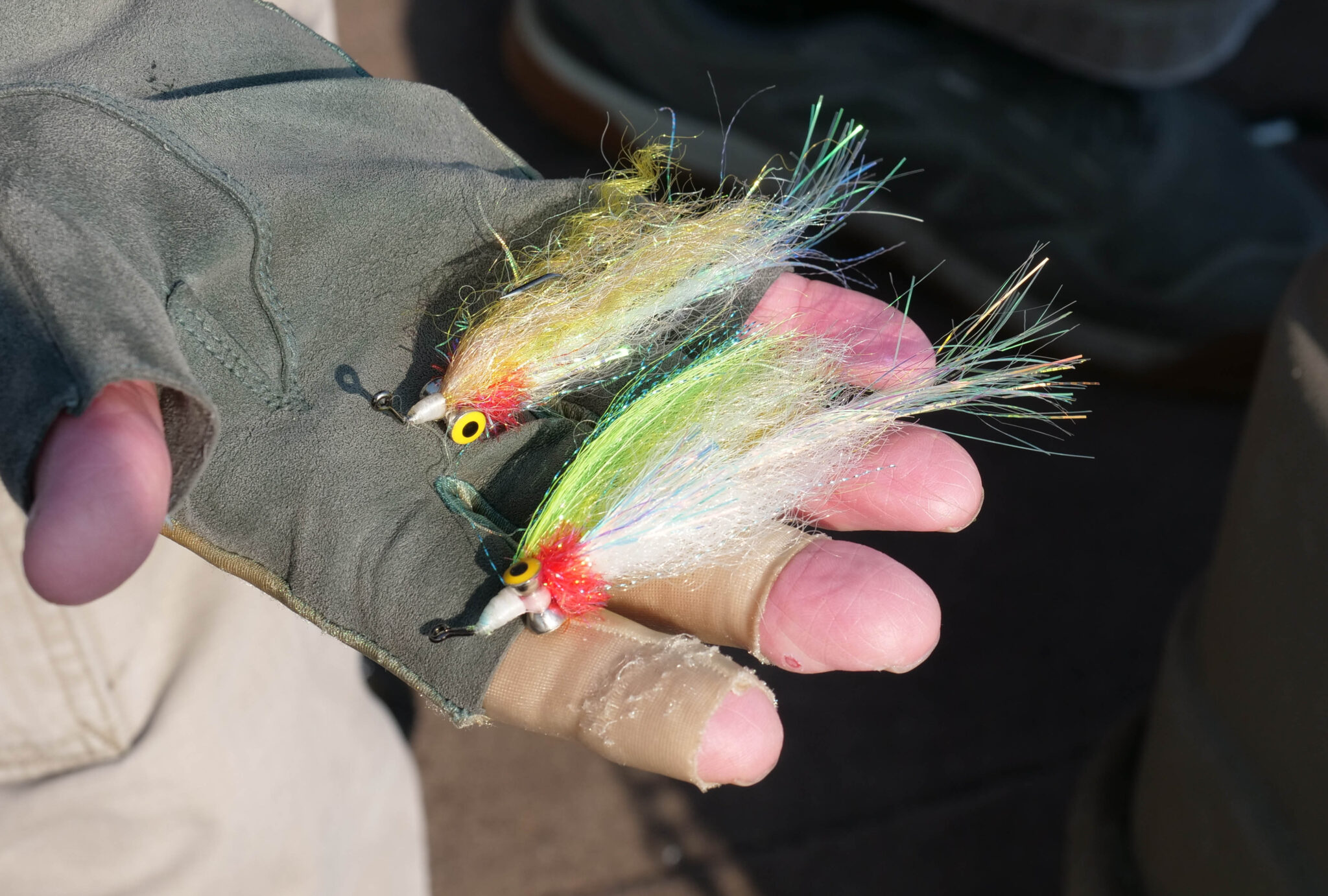
The action of a fly can indeed make a significant impact. Stripers often exhibit a preference for vertically jigged flies and baits. On occasions, when anglers are jigging feathered jigs along the structure, they can outperform skilled fly fishermen using the same pattern, sometimes by a ratio of 3 to 1. Clousers weighted towards the eye have the ability to dive when paused, which can serve as a trigger for Stripers. The original Clousers were tied with a mid-hook eye placement, causing the fly to sink more horizontally during the pause. The positioning of the eye and the distribution of weight can drastically alter how a fly behaves when paused, a crucial moment since we all know Stripers tend to strike during this phase.
Also a single pattern can be tied differently and still be the same fly pattern. Its always best to hold the fly and take a picture of it so you know how long it is, how much weight is on it and where is it placed, how sparse or heavily it is dressed and what kind of hook is it tied on. Jig eyed hook flies move horizontally at an angle vs straight eyed hooks. Straight eyed hooks work better with a pulse disc as well. Larger gape hooks hold better whereas smaller size hooks and gapes hook more fish when they are hitting light.
There are times when Stripers become lethargic in their pursuit of food, especially when baitfish are plentiful. During such periods, they may not respond as effectively to pulse disc flies or fast-sinking flies as they would to a long-suspended fly. Stripers may sometimes stun a baitfish with a tail slap or bite and return to consume it. It’s conceivable that they find it easier to consume a baitfish that’s been incapacitated by another fish – less effort for more food. Just last week, I experienced fish striking stationary flies resting on the bottom. Fishing slowly may seem counterintuitive when there’s an abundance of baitfish, but if the fish are satiated and seeking an easy snack or dessert, why expend extra energy? Slow retrieves often outperform faster ones in such situations.
Rear-weighting a fly can induce sideways darting motions during the pause, a feature intentionally designed into some highly effective flies. Many fly tiers intentionally concentrate all the weight at the rear of the fly to prompt it to turn during the pause after a rapid strip.
Micro movements in a fly when fished slowly with extended pauses can be achieved by using materials like marabou. In the 1990s, I discovered that some inland striper anglers in southern lakes were achieving great success by “Fly Coring” large white marabou streamers. Today, many striper flies are tied with Craft Fur to impart more movement in the wing. Personally, I started tying Clousers using Polar Bear fur, which possesses a unique iridescence in the water. While it doesn’t create micro movement, it gives the appearance of movement. Additionally, the inclusion of wispy flash tails adds significant movement to the fly during both the strip and pause, possibly explaining why I’ve landed most of my 20-pound-plus fish on Dan Blanton’s flashtail Clouser.
In the 1970s, one of my mentors and a master of San Luis Reservoir, Len Bearden, asked me to tie custom flies for San Luis. His favorite was a small yellow and brown traditional bucktail Clouser. I tied him a dozen, and he selected three, telling me to keep the rest. When I inquired about his preference, he explained that he favored sparse flies, as the fish had a preference for translucent, low-profile patterns over more heavily dressed ones. One typically doesn’t dispute the advice of someone who holds multiple world records in San Luis Reservoir and O’Neill Forebay.
The key lesson from all this fly theory is that choosing the right fly is closely tied to keen observation. What worked last week may not be as effective this week. Starting with standard flies is a sound approach, and, in my opinion, switching flies should only be considered under three circumstances:
- You observe fish actively rejecting your fly, such as a fish following it to the boat and then turning away, or a fish lightly nipping at the fly and not striking again, or a fish ignoring or tracking the fly but ultimately turning away when viewed on Livescope.
- You’re fishing alongside someone in the same boat using identical lines and retrieves, and they’re consistently catching three fish to your one.
- You’ve examined the stomach contents of a caught fish and determined what the fish is currently feeding on.
When fishing conditions are excellent or even good, sometimes the fly isn’t the limiting factor. Maintaining confidence in your chosen gear and persevering is the key. The true challenge lies in locating actively feeding fish, and many days, all the fish you catch are concentrated in a brief one-hour window, often unrelated to the fly choice.










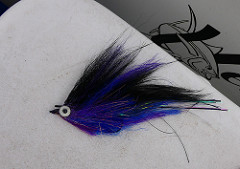























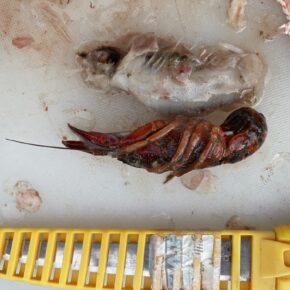

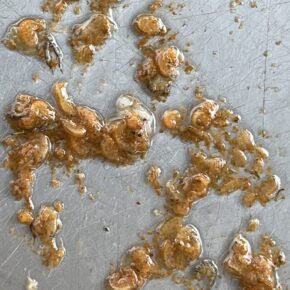






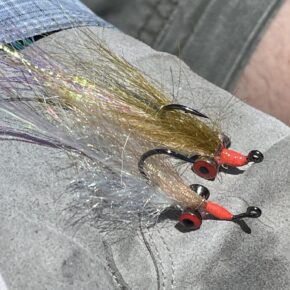





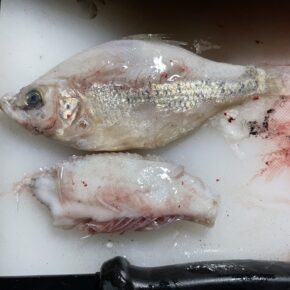











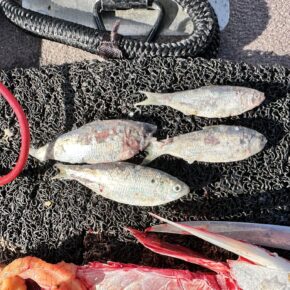




Great write up Meng!